Syn.: Pentaphyllum hippianum (Lehm.) Lunell, Potentilla pensylvanica var. hippiana (Lehm.) Torr. et A. Gray
Family: Rosaceae Juss.
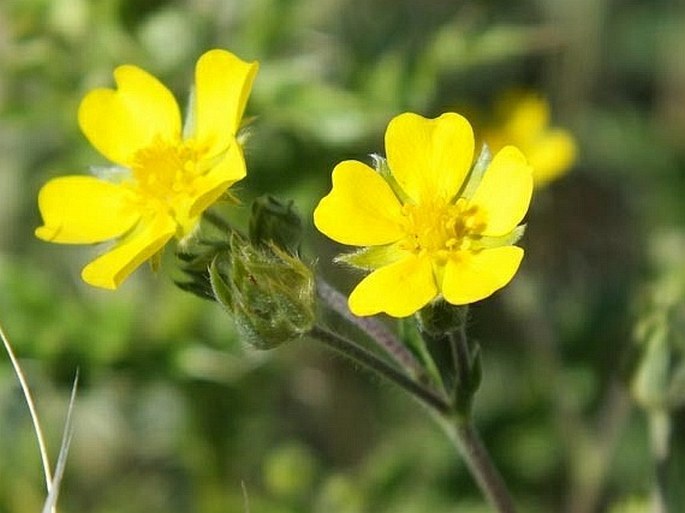
Distribution: Found in Alaska and in most Canadian provinces with exception of Maritimes provinces. In US from Idaho to Minnesota and Michigan and southwards to New Mexico and Arizona. In Ontario, Quebec and Michigan it is considered non-native. Absent in California, Oregon and Washington.
Ecology: Grows in prairie, grassy and rocky slopes, foothills, montane and subalpine in elevations 800 to 3500 m. Blooms June to August and more southern latitudes until September.
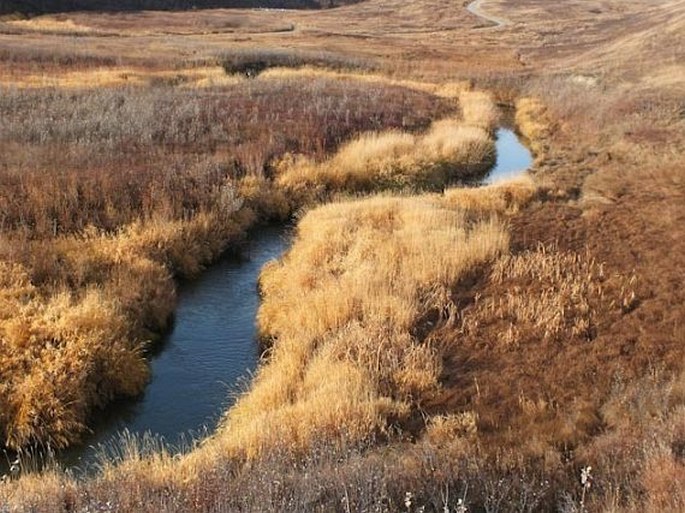
Description: Perennial herb 10–50 cm tall, stem erect, hairy to woolly, from large, branched caudex over a thick taproot. Basal leaves 2.5–19 cm, pinnately divided into 7–13 leaflets, toothed, silvery green above, silvery below; leaf pubescence is variable, from almost hairless to hairy to woolly, upper surface less pubescent than lower parts. Inflorescence is an open, branching cyme with perfect flowers, yellow, 5–9.5 mm across, pentamerous, stamens and pistils numerous. Calyx pubescent as well. Fruits are numerous achenes, 1.4–1.9 mm long.
Note: This species was named by German botanist Johann Georg Christian Lehmann (1792–1860) for his friend, Karl Friedrich Hipp. The common name used in Canada is Horse Cinquefoil, which had been applied by somebody who confused Mr. Hipp’s name with a Greek word for a horse (hippos).
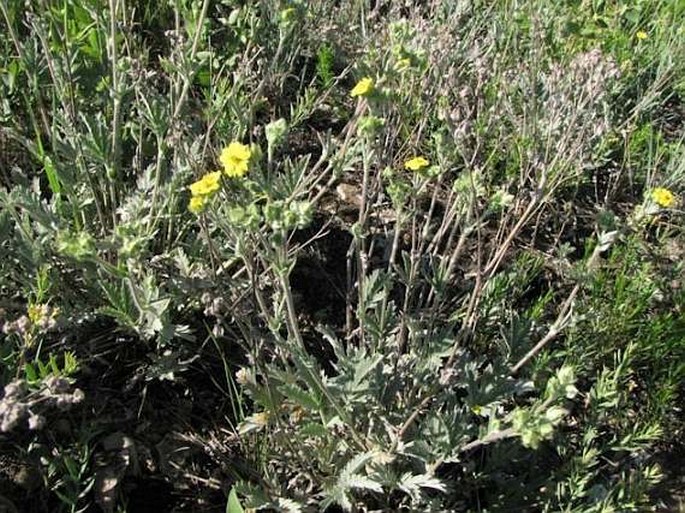
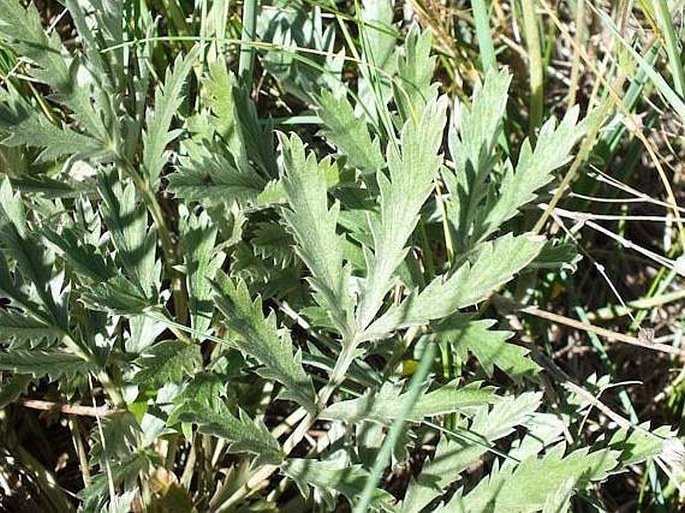
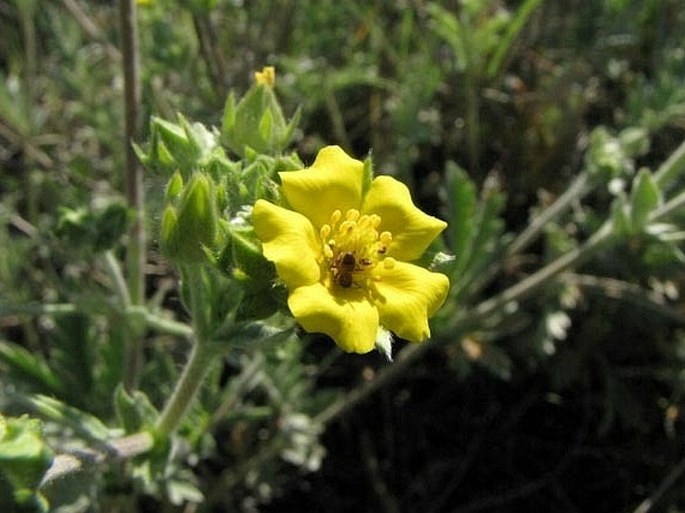
These images were taken in Canada, Alberta, Calgary, Confluence Park (July and October 2013).


